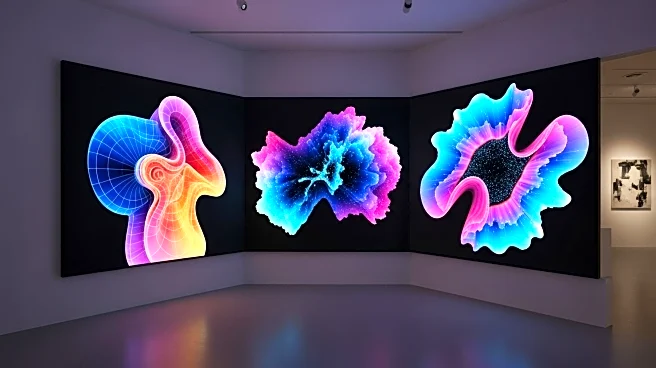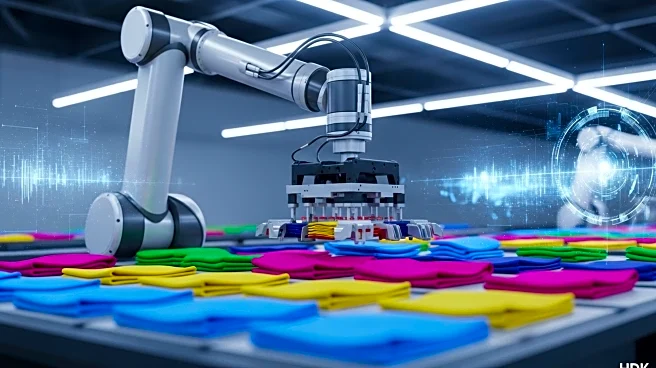What is the story about?
What's Happening?
Under the leadership of Adam Levine, the Toledo Museum of Art is adapting to the digital age by integrating digital art and AI into its operations. Levine has expanded the museum's budget and endowment, launched TMA Labs, and acquired digital artworks, including NFTs. The museum's exhibition 'Infinite Images' explores the history of computer and digital art, aiming to engage audiences and future-proof the institution. Levine emphasizes the importance of digital initiatives in enhancing audience engagement and personalization, preparing the museum for a future where digital experiences are integral to visitor interactions.
Why It's Important?
The Toledo Museum of Art's embrace of digital art and AI reflects a broader trend in the cultural sector where institutions are leveraging technology to remain relevant and engage diverse audiences. By integrating digital initiatives, the museum is positioning itself as a leader in the field, setting an example for other institutions to follow. This approach highlights the potential for technology to enhance cultural experiences, offering new ways for audiences to interact with art and history. The museum's efforts to future-proof its operations underscore the importance of innovation in maintaining cultural relevance.
Beyond the Headlines
The integration of digital art and AI into museum operations raises ethical and practical considerations about the role of technology in cultural preservation. As museums adopt digital tools, they must balance innovation with the preservation of traditional art forms and practices. Additionally, the focus on personalization and data-driven experiences may influence how audiences perceive and engage with cultural institutions, challenging traditional notions of art appreciation and education. The Toledo Museum of Art's initiatives offer insights into the evolving relationship between technology and culture, highlighting the potential for digital tools to transform the museum experience.
AI Generated Content
Do you find this article useful?













